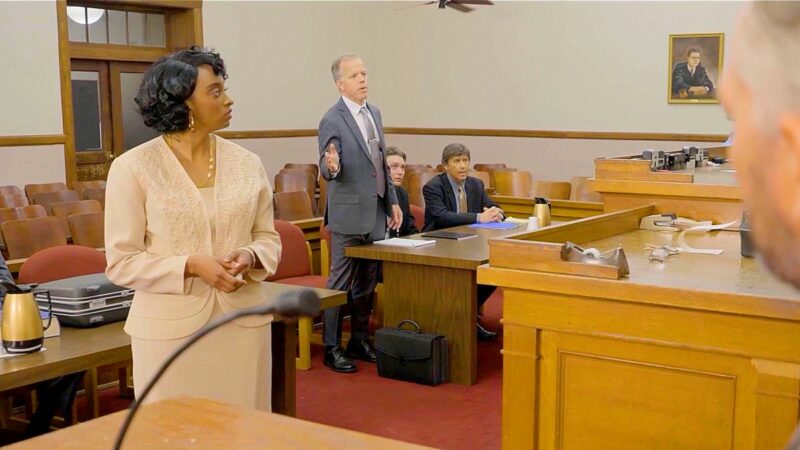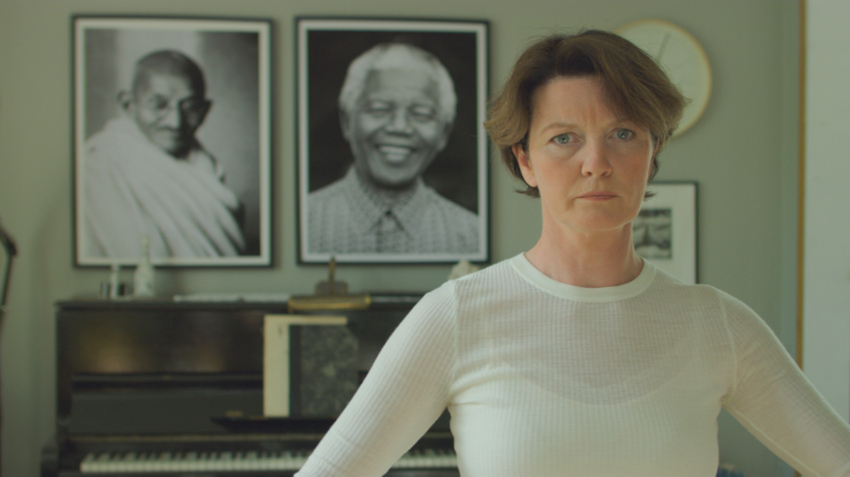
Both of your feature films, OF HORSES AND MEN and WOMAN AT WAR, show humanity on the losing end of an effort to tame or dominate nature. What makes this conflict, and our radical failure or foolishness, such a good source of storytelling and comedy for you?
Benedikt Erlingsson: I recently started thinking about the connections between my two films – OF HORSE AND MEN and WOMAN AT WAR. It’s something that in a way I was not conscious of before this new film was finished. For me it’s very clear that ‘nature’s rights’ should in fact be considered on the same level as ‘human rights’ – and that’s a thread I agree runs through both films.
To me it seems evident that Nature’s rights should be strongly protected in all constitutions and defended by local and international laws. We need to collectively realize that untouched nature has an intrinsic right and necessity to exist, regardless of our human needs or our economic system.
I can for example imagine a more rational system in which ‘we humans’, if we wanted to spoil or use unblemished Nature for our own needs, we would need to go through a process, maybe something like a trial, in order to be allowed to do that.
FA WOMAN AT WAR from jour2fete on Vimeo.
These issues are really about the common good and the long-term interests of our existence as a whole. Just like the ability to take a person’s freedom away and keep them inside a prison for life. So I think now is the right time to look at this kind of approach.
Add to this the strange paradox in some of our societies, the “State”, which in democratic countries is an instrument created by the people for the people, can be so easily manipulated by special interests and against what’s obviously the common welfare. When we look at the big, existential environmental challenge we face, and what has been happening, this becomes crystal clear.
And yes – it can also sometimes be a good breeding ground for comedy, like it is in my little country and in the film, but in many other countries there is only tragedy. I want to mention two heroes of mine here. Two real life women at war: Berta Cáceres from Honduras and Yolanda Maturana from Columbia. Both environmentalists fighting for “Life itself” and who for their troubles were murdered by dark forces with interests in the lands the women died for.
What’s even worse in all of this is that the State seems not to worry about protecting them. It even seems that state-power in certain countries is actively fighting for the other side. Until we come to the situation where the environmentalist becomes an enemy of the state.
More than OF HORSES AND MEN, WOMAN AT WAR is a ‘classic’ narrative film with a clear story-arc for the main character. How did you decide on this direction for your new project?
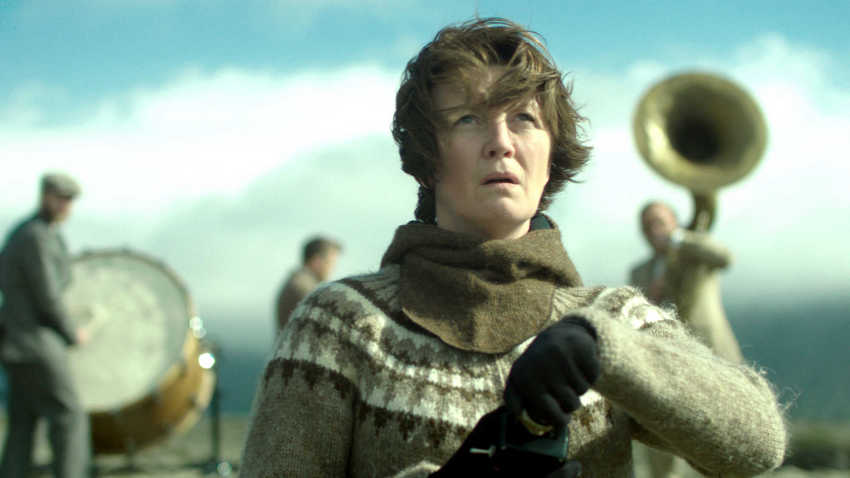
Benedikt Erlingsson: Maybe vanity took me in this new direction. In light of the success of OF HORSES AND MEN there were some bitter comments and reactions in Iceland. Many told me that I had made a great “festival film” but that it was not a movie for real audiences. So even after OF HORSES AND MEN had also proved to be an audience success in certain countries, I think that somehow stuck with me. And possibly it played a part in why I decided my next feature would be a “Mainstream-Blockbuster-Story for Everyone” kind of a film.
Why did Halla’s character need to be a woman?
Benedikt Erlingsson: I actually did not think about it in gender terms and what would be politically “right” or not. Actually it almost irritates me now how politically correct everything seems today… But that could maybe change tomorrow. In this case, Halla’s character came to me organically through the story and what the drama of telling that story demands.
How did you cast the main actress, Halldóra Geirhasdóttir?
Benedikt Erlingsson: Casting Halla was a long and a rough journey, and as often happens the right answer was right in front of my nose. Halldóra is a childhood friend and colleague of mine. Professionally, we kind of grew up as siblings, and she was my big sister. We started to work together on the big stage of the National Theater when we were 10 and 11 years old. And very early on in the creative process for WOMAN AT WAR, I had a flash vision of Halldóra playing Halla. But then I gave it up and started thinking about other actors who were also dear to me. I also had to work with the concept of the twins in the script, which I wanted to make sure felt organic.
But then fate brought Halldóra back to me, and I realized she was not just the obvious but also the right choice. As an actor she is a force of nature, and in the Icelandic theater she really is THE ACTRESS of our generation. Her spectrum of talent is so wide that I feel that calling Halldóra just an actress diminishes her, failing to describe the full spectrum of what she can do. Besides acting for the screen she is also the most famous clown and comedienne in Reykjavík theater and the go-to dramatic actress for the biggest repertory theatre in Iceland, where she takes on leading roles every season.
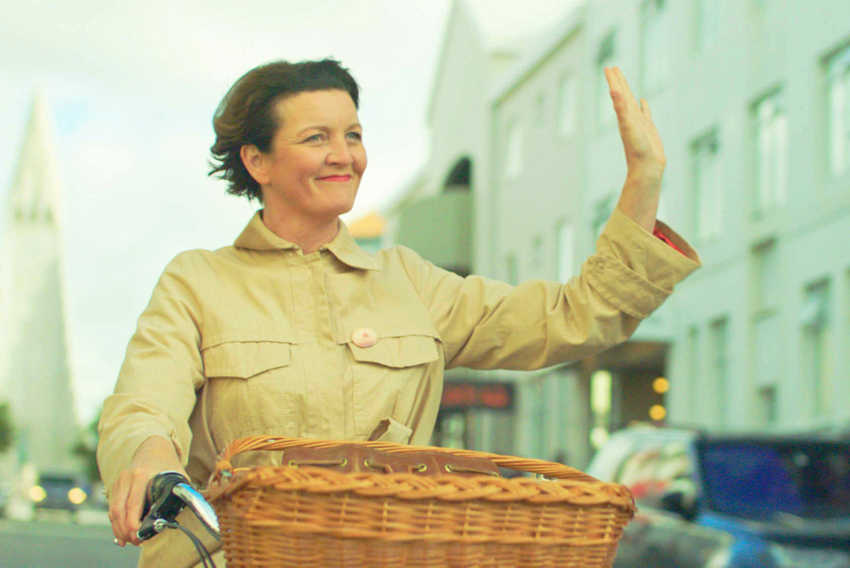
She has gloriously played male roles like “Vladimir” in Waiting for Godot and the knight himself in “Don Quixote” – a role that might even share some connection to the one she has in this film. And that’s just the beginning. She has also become famous for creating a kind of alter ego, a chauvinistic male ‘dick’ called “Smári” who performs in a duet called “Hannes and Smári.” There is now a cult around her and these male characters in the world of live Icelandic theatre. I think you could call Halldóra the Sarah Bernhardt of Iceland – if Sarah Bernhardt could live up to the comparison!
Was it a coincidence that she shares a name with the film’s hero?
Benedikt Erlingsson: Halla is a common name in Iceland, and one that carries with it quite a lot of historical and cultural reference. Halla and Eyvindur were the last outlaws in Iceland’s history, who are still famous for surviving on the run in the highlands for over 20 years back in the seventeenth century. They were real mountain people, sheep thieves and rebels, and many stories have been told about their exploits and struggles.
Around a century ago the Icelandic poet and playwright Jóhann Sigurjónsson wrote a play about them, “Eyvindur of the Mountains” that reached the international stage and toured successfully in several countries. And exactly 100 years ago in 1918 Victor Sjöström, a Swedish filmmaker. made a film out of the legend called THE OUTLAW AND HIS WIFE, in which he played the lead role himself. So the name “Halla” does come with some nice baggage, at least for Icelandic audiences.
The film could be described as a drama, an eco-thriller, a comedy or all of the above. How did you think about genre while working on the film?
Benedikt Erlingsson: I never think about the genre of a film in my writing or my creative process, not at all. Come what may, genre is something to speculate upon after the child is born, so to speak. You don’t think about what kind of human being your child will become while you are making it. Or I don’t do that at least.
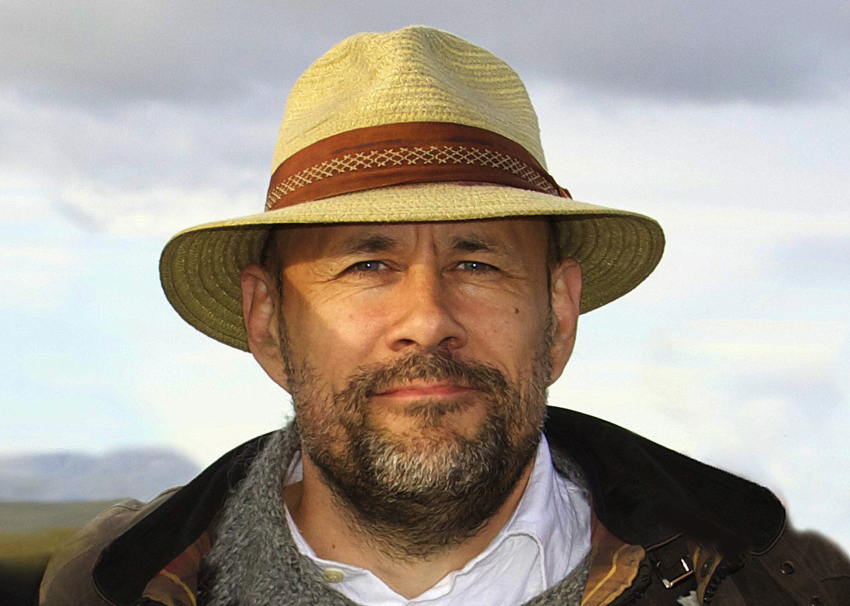
My co-writer Ólafur Egill Egillsson and I did not discuss film genre seriously at any point. The closest we came was just playing with words… “Fairy Tale” for example. That is a sexy word. And one that was also very helpful to us in crafting the narrative.
For me it’s much more about going after the story, the mission, the pain, the abstract notion of whatever turns me on about the project and the story to be told. Both of us are very interested in dramaturgy, consider this film a comedy… I never “do comedy”. Or never aim for comedy at least. If something is funny in the kinds of stories I tell, that’s an extra or a side effect.
In terms of process I always go right for the pain…I’m looking for the pain of the author or the character and what that pain means. At the same time I don’t like movies that are only about that one thing: “feeling the pain.” For me starting there is more about genuinely understanding a story and it allows me to explore different directions.
Once we started outlining things with my DOP Bergsteinn Björgulfsson for example, the story also led us to play with the concept of an “action film.”
And at what stage did the music weave its way into everything?
Benedikt Erlingsson: The music was there from the original first vision that led me to the movie. As I was dreaming and fantasizing about what I wanted to see in my next film, I saw a woman running down an empty street. She was running through the rain towards me until she stopped right next to me, dripping wet. Once I got a closer look at her, I could also see there was a three-piece band playing right behind her. Playing just for her and not at all for me. I listened closer until I could hear what the band was playing and it was the soundtrack to the woman’s life.
How did you practically approach the collaboration with the musicians and singers, and was it a more in depth working process than usual?
Benedikt Erlingsson: We started developing the music early on, and we had to find out exactly what element the Band would be representing in the film. As we took that journey, this other music also kept appearing and pressing its way into the story. This became the three Ukrainian female voices that make up Halla’s choir. With the music I wanted to keep “both a belt and suspenders on”, as we say here in Iceland, in order to make sure I was flexible and not be trapped when we reached the editing stage.
To do this, we test shot all the music scenes, and that was after we had already done full demo recordings for each and every piece of music. Our end goal was to be able to record as much of the music as possible live on set. This created a challenge for everybody, not only the musicians but also the AD, the DOP and the entire sound department. So the way we did it insured we had a lot of pieces to play with: we had the studio recordings, the live on set recordings and also more ‘off-set’ outdoor recordings, so we were able to work all of those in the end.
Davíð Þór Jónsson, the film’s composer, has collaborated with me mostly in the theatre, and also wrote the score for OF HORSES AND MEN. Omar and Magnús, two of the band members, are old friends of Davíð who have a band together with Óskar, who is Ómar’s brother. That band is called ADHD. They play completely different music than our band in the Film.
How does your background as an actor and showman influence the way you approach filmmaking as a director?
Benedikt Erlingsson: I’m adjusting to this new role of being the Filmmaker and yes, in some sense, my background has been helpful. At the same time I also see it as a handicap.But I do like the question, because it also reveals how far we have come from the beginnings of filmmaking.
How would Charlie Chaplin have answered it? Or Orson Welles? Would anyone have even asked them? I look at myself as a storyteller who also wants to be a poet, so I’m stuck somewhere between these two approaches, which is like wanting to ride two horses at the same time. And by the way, that is possible. You just need the right training and the talent, just like the best circus artists
Follow Benedikt Erlingsson on Social Media
Website
IMDb
Facebook
Twitter
Instagram
Vimeo
Courtesy Magnolia Pictures
In Camera by Naqqash Khlalid Launch on VOD April 29
Naqqash Khlalid’s Directs Nabhan Rizwan. In Camera stars an EE BAFTA Rising Star Award Nominee.
2025 Philip K. Dick Sci-Fi Film Festival Award Winners Announced
Vanessa Ly’s Memories of the Future Awarded Best PKD Feature
Dreaming of You by Jack McCafferty Debuts VOD & DVD for April Release
Freestyle Acquires “Dreaming of You” for April 15th Release
Hello Stranger by Paul Raschid set for London Games Festival & BIFFF
The film Is set for an April 10th Premiere at The Genesis Cinema in London (LGF) and BIFFF
Daydreamers Official Trailer by Timothy Linh Bui: Released by Dark Star Pictures
Daydreamers Vietnamese Vampire Thriller – May 2nd release
Afternooner by The Harrow Brothers: Funniest Movie of the Decade on VOD & DVD April
Freestyle Acquires “Afternooner” for April Release

